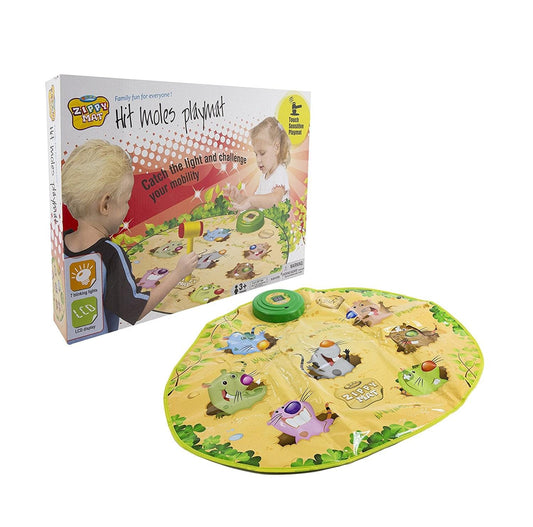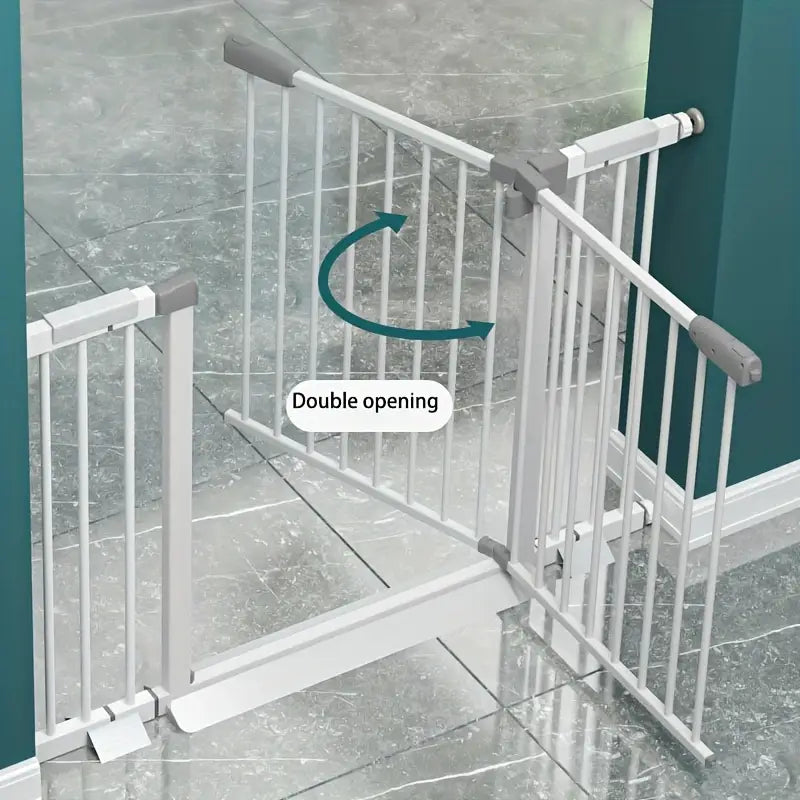Introduction
When you’re in the thick of parenting—especially with a curious crawler or an adventurous toddler—it doesn't take long to realize just how crucial baby gates are. They serve as essential barriers between your little explorer and potential dangers around the house. But here's where many parents get stuck: Should you go with a sleek, modern retractable baby gate or stick with a classic, reliable swinging gate?
Picking the wrong gate can lead to more headaches than it's worth. Imagine struggling to open a clunky gate while holding a squirming toddler, or dealing with a flimsy retractable one that your child can easily push through. Yeah, no thank you!
This comparison guide breaks down both types of baby gates, helping you understand their features, pros, cons, and ideal use cases—so you can make a confident, well-informed decision.
What Are Baby Gates?
Baby gates are essentially barriers designed to keep babies and toddlers safe by preventing access to certain areas of a home. Think of them as your in-house security guard, blocking entry to rooms or staircases that could be dangerous for your child. They're especially useful once your child starts crawling and becomes more mobile.
Most baby gates are adjustable in width and can be mounted in doorways, hallways, or at the top and bottom of staircases. They're typically made from wood, metal, plastic, or a combination of these, and they come in various styles to suit both your functional needs and your home’s aesthetic.
Overview of Retractable Baby Gates
Retractable baby gates function similarly to a window shade. You pull them across a doorway or hallway and latch them into place. When not in use, they retract into a compact spool, almost disappearing from sight.
They're often made from mesh or fabric and designed with aesthetics in mind. The sleek appearance makes them ideal for modern or minimalist homes. They're especially great for open floor plans and smaller spaces where you don’t want a bulky fixture in the way.
Pros of Retractable Baby Gates
- Space-saving and minimal
- Blends easily with home decor
- Flexible and works for wide or angled openings
- Quiet operation—great during nap time
- Can be mounted in multiple areas with extra brackets
Cons of Retractable Baby Gates
- Mesh material may wear out over time
- Installation can be tricky (needs precise alignment)
- Less secure for stair tops
- Usually requires two hands to open or close
- Often more expensive than swinging gates
Overview of Swinging Baby Gates
Swinging gates operate like a standard door. They swing open and latch shut, typically constructed of metal or wood. They’re available as either pressure-mounted (no drilling) or hardware-mounted (requires screws).
These gates are known for their strength, making them a top pick for high-risk areas like the top of stairs. You’ll see these in many homes simply because they’re durable and effective.
Pros of Swinging Baby Gates
- Exceptionally sturdy and long-lasting
- Safer for stair use
- Easy one-hand operation (great when multitasking)
- Child-proof latches
- Often don’t have a bottom rail (in hardware-mounted types)
Cons of Swinging Baby Gates
- Requires space to swing open
- More visible and bulky
- Potential for pinched fingers
- Less stylish in modern homes
- Pressure-mounted versions may have a trip bar
Safety Comparison
| Feature | Retractable Gates | Swinging Gates |
|---|---|---|
| Top of Stairs Approved | Sometimes | Yes (Hardware-Mounted) |
| Latch Security | Moderate | High |
| Material Strength | Mesh/Fabric | Metal/Wood |
| Trip Hazard | None | Possible (Pressure-Mounted) |
Ease of Installation
- Retractable: Needs precise alignment; usually hardware-mounted
- Swinging (Pressure): Quick, tool-free install
- Swinging (Hardware): More secure, but requires drilling
Aesthetic and Space Considerations
Retractable gates are perfect for minimalist homes, where you want a barrier that disappears when not in use. Swinging gates are bulkier but can fit rustic or traditional decor styles. Retractable gates take up less space and are more discrete.
Versatility and Portability
- Best for odd angles: Retractable
- Easiest to move: Swinging (Pressure-Mounted)
- Best travel gate: Swinging
Cost and Value
| Feature | Retractable Gates | Swinging Gates |
|---|---|---|
| Price Range | $60 – $120+ | $30 – $100+ |
| Style Appeal | High | Moderate to High |
| Durability | Medium | High |
| Portability | Moderate | High (Pressure) |
Best Scenarios for Each Type
When to Choose Retractable Gates
- Open layouts or wide spaces
- Modern or minimalist decor
- Occasional use and flexibility
When to Choose Swinging Gates
- Top/bottom of stairs
- Heavy daily use
- Homes with pets or toddlers
Expert and Parent Opinions
Experts recommend hardware-mounted swinging gates for maximum safety, especially on stairs. Parents often favor retractable gates for their low profile and easy storage, while swinging gates are praised for their strength and reliability over time.
Final Verdict: Which One Should You Choose?
If you value safety and durability—especially for staircases—go with a swinging gate. If you prefer a clean look, flexible use, and need to save space, retractable gates are the way to go. Some homes might even benefit from using both depending on the location.
Conclusion
Both gate types serve different needs. There’s no one-size-fits-all, but there is a right choice for your home. Think about your lifestyle, space, and how often you’ll use the gate. Then choose accordingly—and enjoy the peace of mind!
FAQs
1. Can retractable baby gates be used at the top of stairs?
Some models are rated for stair use, but swinging gates are generally safer and more secure.
2. Are swinging baby gates better for pets too?
Yes, especially hardware-mounted versions. They hold up better against larger or energetic pets.
3. What is the lifespan of each type of gate?
Swinging gates usually last longer, especially those made from metal or wood. Retractable gates may wear out faster if used heavily.
4. Do both gate types meet safety standards?
Yes, look for JPMA or ASTM certification to ensure safety compliance.
5. Can I install these gates without drilling holes?
Pressure-mounted swinging gates don’t require drilling. Retractable gates usually do for a secure hold.



